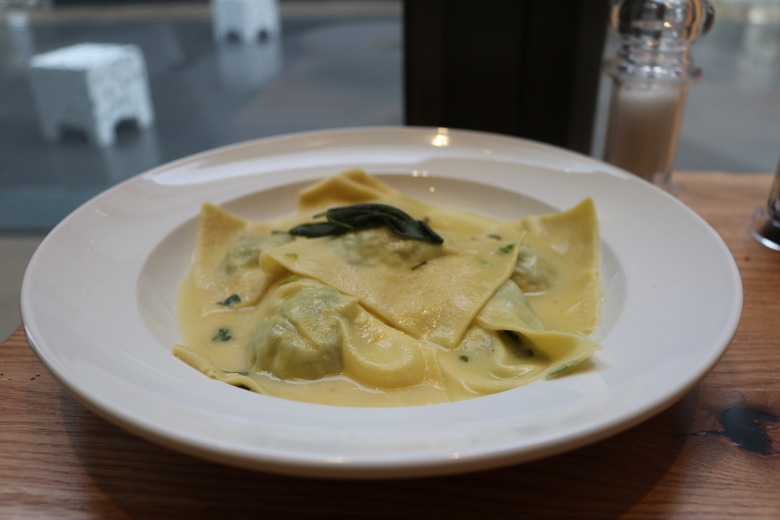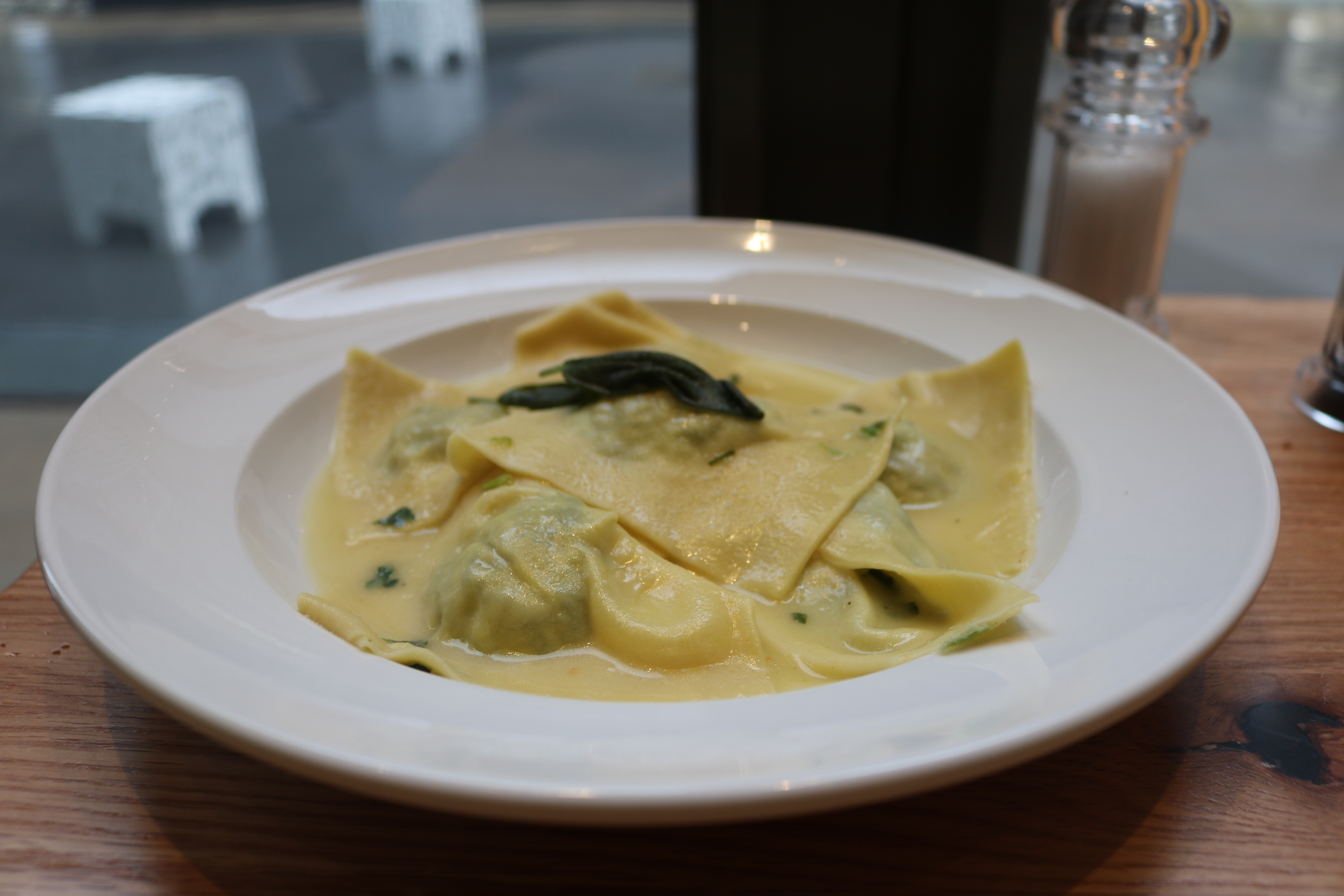Celebrate Pasta Fresca For National Ravioli Day
Americans are crazy for pasta. We love it dry or fresh, drowning in sauce, topped with meatballs, layered in casseroles, or filled with tasty tidbits of meat, cheese, or other vegetables. On average, we eat about 26 pounds of pasta, per person, every year, which is a puny number considering the Italians eat close to 60 pounds per person, per year.
That's A Wrap
Ravioli, which comes from the Italian verb riavvolgere, which means "to wrap," is a favorite pasta ripiena, or filled pasta, that, like many dishes in Italy has ancient roots. Early versions of this dish date back to the Roman Empire and legends abound about its origins. Some Italians say ravioli hails from Liguria, others say Emilia-Romagna, and some think it came by way of Sicily.
Although there are diverse variations in the filling and sauce recipes from one region to the next, the recipes cooked today resemble those first recorded in the Liber Coquina, a medieval cookbook from the fourteenth century that specified a meat or cheese-filled ravioli must be the size "not less than a chestnut."
A True Pasta Fresca
For many Americans, a handmade pasta fresca, or fresh pasta, is the epitome of luxury, but for Italians it isn't superior to dried pasta, or pasta secca. In reality, it's simple to make and has only a few ingredients For Italians, fresh pasta is just a different medium for a huge range of fillings and sauces dictated by the shape, size, and dough. In fact, it's premium-quality dried pasta that most Italians eat regularly because fresh pasta is perishable and must be eaten the day it's made. You definitely won't see boxes of frozen fresh pasta in the supermarket because most Italians would rather eat top notch dried pasta than a frozen fresh one.
In Italy, the most common pasta fresca is made with eggs and is either made at home for a special occasion or bought in a specialty pasta store called a pastificio. It's said that the best pasta frescas come from northern Italy where the cuisine is more refined and opulent and relies heavily on eggs and dairy. And the capital of both pasta fresca and stuffed pasta is unequivocally Emilia-Romagna, along with its capital city, Bologna, which earned the nickname "La Grassa" or the fat one, because of its citizens' penchant for rich, complex foods.
A Capital Export
In Emilia-Romagna, they are masters of ravioli and have dozens of filling and sauce variations, but the one that has been widely embraced across Italy, and the world, is the classic ricotta e spinaci. This version is a vegetarian delight made with fresh spinach, ricotta, and Parmigiano-Reggiano served with a butter and sage sauce.
Although the recipe sounds simple, the preparation of this recipe and its short life make it a dish reserved for weddings, birthdays, anniversaries, and during the holidays. Making the dough for ravioli is easy enough and so is rolling it out, if you have a pasta machine or are handy with a rolling pin. However, the combined time and labor that it takes to make the dough, prepare the filling, let the dough and filling rest and chill, combined with the time required to fill the ravioli, prepared the sauce, cook the ravioli and then serve it, make it a labor of love.
To experience an authentic version here in America, we visited the newest U.S. location of Carluccio's in Bethesda, Maryland and watched as their pasta chef prepared ravioli for the day's service, and then sampled the finished dish served with the classic butter and sage sauce.
Little Pillows of Heaven
To cook the ravioli, the chef boiled them in plenty of boiling water with salt; no oil is needed, and served it simply with the classic butter and sage sauce. Each thin square of perfectly cooked, al dente pasta was soft as crepe silk. The herbaceous spinach was contrasted with the creaminess of ricotta and Parmigiano-Reggiano cheese, which also provided a balance of salt and earthiness that mirrored the butter and sage. We can't think of a better way to celebrate National Ravioli Day than at Carluccio's eating this classic dish.
Summer Whitford is the D.C. Editor at The Daily Meal and also writes about food, drink, and travel. Follow her on Twitter @FoodandWineDiva, on Instagram at thefoodandwinediva, and read more of her stories here.

